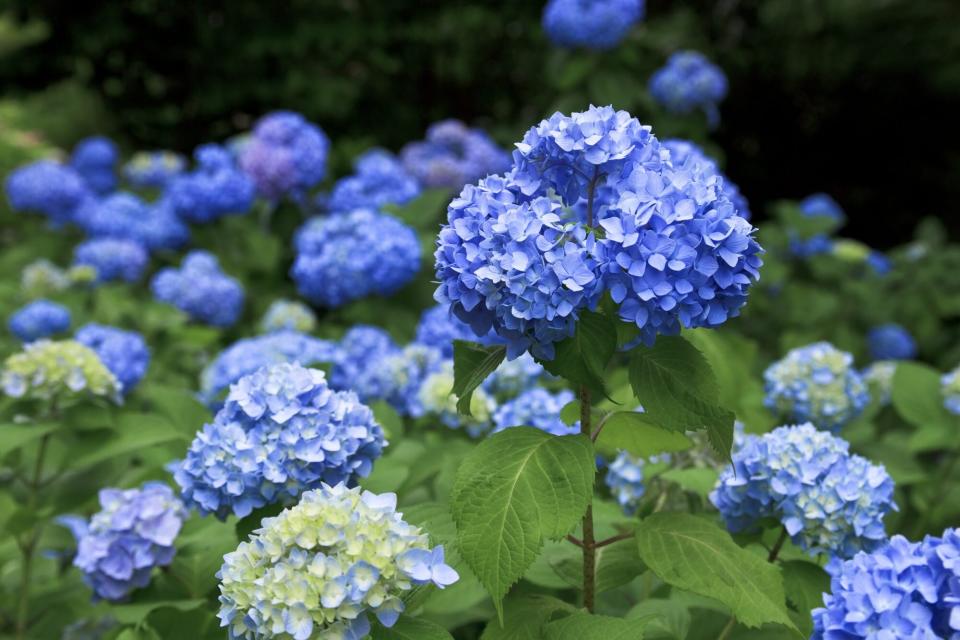What to Do If Your Hydrangeas Aren't Blooming

There are plenty of reasons why your hydrangeas may not be blooming as much as they once did. Conditions like extreme heat, drought, or excessive sun exposure can all impact how many flowers your shrubs produce. Pruning is also an important consideration. Fortunately, many of the common issues that keep hydrangeas from flowering have simple fixes.

Getty / masahiro Makino
Make sure your conditions are just right
Your first step to ensuring your hydrangeas produce the fluffy clusters of flowers they're known for is making sure your conditions are right. Justin Hancock, a Monrovia Horticultural Craftsman, suggests confirming your growing conditions match up with your hydrangea's needs in terms of light, moisture, and soil fertility.
Offer your plants more sun—or shade
To make sure your hydrangea is getting the right amount of sun, you need to know which variety you're growing. "If it's Hydrangea paniculata, then full sun isn't a problem in most areas (though, in areas with especially hot, dry summers, some afternoon shade can be beneficial)," he says. "If it's a Hydrangea macrophylla, that gets a little tougher." According to Hancock, this species generally does better in partial shade, so if it's currently getting blasted by direct sunlight, that may be the problem. "The cooler the summers are, the more sun these varieties can take without showing sunburn," he notes.
Reconsider your watering schedule
Determining if your blooming problem has to do with hydration is a little more straightforward. Too little water will leave you with wilting leaves, which can lead to yellowing and dropping. Most varieties of hydrangeas will be happiest with soil that feels like a well-wrung sponge to the touch. Anything wetter and your plant may be getting too much to drink.
Make sure you're pruning appropriately
"If the environment seems fine, then look at pruning, and make sure your hydrangea is being pruned at the right time for its blooming cycle," Hancock says. "Keep in mind that pruning happens by the hand of the gardener or by nature (deer nibbling the branches, cold winter temperatures killing the stems back, etc.)."
Remember: A bloomless hydrangea isn't necessarily an unhealthy one
Is your hydrangea newly planted and not blooming much? Don't fret. The bush may be putting more energy into getting settled into the garden than blooming—which is a good thing, according to Hancock. And, after checking all the obvious culprits, you may find your perfectly healthy hydrangea is no longer flowering because it's receiving too much of a good thing. If your plant is getting too many nutrients through your soil, it may begin producing lush, healthy leaves at the expense of blooms.

